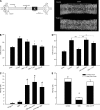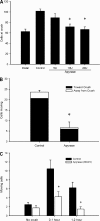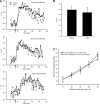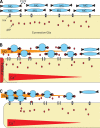Neuroglial ATP release through innexin channels controls microglial cell movement to a nerve injury
- PMID: 20876360
- PMCID: PMC2947054
- DOI: 10.1085/jgp.201010476
Neuroglial ATP release through innexin channels controls microglial cell movement to a nerve injury
Abstract
Microglia, the immune cells of the central nervous system, are attracted to sites of injury. The injury releases adenosine triphosphate (ATP) into the extracellular space, activating the microglia, but the full mechanism of release is not known. In glial cells, a family of physiologically regulated unpaired gap junction channels called innexons (invertebrates) or pannexons (vertebrates) located in the cell membrane is permeable to ATP. Innexons, but not pannexons, also pair to make gap junctions. Glial calcium waves, triggered by injury or mechanical stimulation, open pannexon/innexon channels and cause the release of ATP. It has been hypothesized that a glial calcium wave that triggers the release of ATP causes rapid microglial migration to distant lesions. In the present study in the leech, in which a single giant glial cell ensheathes each connective, hydrolysis of ATP with 10 U/ml apyrase or block of innexons with 10 µM carbenoxolone (CBX), which decreased injury-induced ATP release, reduced both movement of microglia and their accumulation at lesions. Directed movement and accumulation were restored in CBX by adding ATP, consistent with separate actions of ATP and nitric oxide, which is required for directed movement but does not activate glia. Injection of glia with innexin2 (Hminx2) RNAi inhibited release of carboxyfluorescein dye and microglial migration, whereas injection of innexin1 (Hminx1) RNAi did not when measured 2 days after injection, indicating that glial cells' ATP release through innexons was required for microglial migration after nerve injury. Focal stimulation either mechanically or with ATP generated a calcium wave in the glial cell; injury caused a large, persistent intracellular calcium response. Neither the calcium wave nor the persistent response required ATP or its release. Thus, in the leech, innexin membrane channels releasing ATP from glia are required for migration and accumulation of microglia after nerve injury.
Figures










References
Publication types
MeSH terms
Substances
Grants and funding
LinkOut - more resources
Full Text Sources
Miscellaneous

